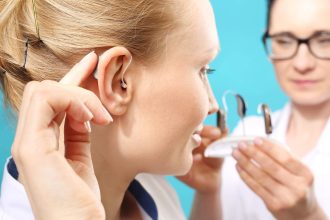Water is an essential element of life, and ensuring that it is safe to drink is of utmost importance. There are various methods to purify water, and while some involve traditional techniques, others are more unconventional. In this article, we will explore what you can put in water to purify it, ranging from household items to natural ingredients and specialized products.
Clean and safe drinking water is a fundamental necessity for a healthy life. However, not everyone has access to a clean water source, which is where water purification methods come into play. These methods can be broadly categorized into traditional and unconventional approaches.
Traditional Methods of Water Purification
Traditional methods of water purification have been relied upon for centuries to make water safe for consumption. These techniques are often easily accessible and cost-effective, making them valuable options for many people worldwide. Here’s a more detailed look at these traditional purification methods:
Boiling Water
Boiling water is one of the simplest and most effective ways to purify it. By bringing water to a rolling boil for at least one minute (or three minutes at higher altitudes), you can eliminate harmful microorganisms, such as bacteria, viruses, and parasites. Boiling is particularly useful in emergencies or when no other purification methods are available. However, it’s worth noting that boiling does not remove chemical contaminants or dissolved impurities. It merely kills or deactivates microorganisms.
Using Chlorine
Chlorine is a common chemical used to disinfect water. It’s widely employed in municipal water treatment plants to ensure safe drinking water. You can also use chlorine-based products, such as bleach, to purify water at home. When using liquid chlorine bleach, make sure it contains 5.25% to 6% sodium hypochlorite, and add the recommended number of drops or tablets per gallon of water. After adding the chlorine, allow the water to sit for about 30 minutes, so the chemical can work effectively. This method effectively kills bacteria and viruses, making the water safe to drink.
Filtration Methods
Water filtration systems come in various forms, such as activated carbon filters, ceramic filters, and reverse osmosis systems. These systems remove impurities and contaminants from the water, resulting in safe and clean drinking water. Activated carbon filters are particularly effective at removing chlorine, sediment, and some organic compounds. Ceramic filters can remove bacteria and larger particles. Reverse osmosis systems are capable of eliminating a wide range of contaminants, making them suitable for areas with highly contaminated water sources.
Unconventional Methods
Unconventional water purification methods offer innovative approaches to ensuring the safety and cleanliness of your drinking water. These methods are often particularly useful in challenging situations or for those seeking alternative solutions. Here, we’ll explore these unconventional techniques in greater detail:
Solar Water Disinfection (SODIS)
Solar water disinfection, or SODIS, is a remarkable method that relies on the power of sunlight to purify water. To use this method, fill clear plastic bottles with water and place them in direct sunlight for a specified period. The ultraviolet (UV) rays from the sun kill microorganisms, making the water safe to drink. SODIS is an excellent option in areas with limited access to fuel or electricity.
Water Purification Tablets
Water purification tablets are compact and convenient solutions for travelers, hikers, and emergency situations. These tablets typically contain chlorine or iodine and can be added to water to disinfect it. The chemicals released by the tablets effectively kill bacteria, viruses, and parasites. They’re a reliable choice when you need to purify water quickly and don’t have access to other purification methods.
Using Moringa Seeds
Moringa seeds are gaining attention as a natural coagulant that can help clarify water. When crushed and added to turbid water, Moringa seeds attract impurities and contaminants. These impurities then settle at the bottom of the container, leaving clearer water above. This method is particularly useful in regions where Moringa trees are abundant.
DIY Water Purification Techniques
For those who enjoy do-it-yourself projects or find themselves in situations where conventional water purification methods are unavailable, DIY techniques offer creative and effective ways to ensure the safety of your drinking water. Here, we’ll explore DIY water purification methods in greater detail:
Homemade Water Filters
Creating your own homemade water filter is a practical and cost-effective way to purify water. You can assemble a basic filter using easily available materials. The simplest DIY water filter can be made from a plastic or glass container, layered with materials like fine sand, gravel, and activated charcoal. As water passes through these layers, impurities are trapped, resulting in cleaner, safer water.
Using Fruit Peels
Fruit peels, such as those from bananas, can be surprisingly effective at purifying water. The natural absorbent properties of fruit peels make them ideal for removing certain contaminants from water. Simply place the peels in a container of water and allow them to sit for a few hours. As they absorb impurities, the water will become clearer and safer to drink.
DIY water purification techniques offer an alternative to traditional methods, making them accessible and affordable for a wide range of situations. By creating your own water filter or using fruit peels, you can effectively remove impurities and contaminants, ensuring the cleanliness and safety of your drinking water. These methods are particularly valuable when you need to improvise in emergency situations or when you’re exploring the great outdoors.
The Role of Activated Charcoal
Activated charcoal plays a crucial role in water purification, effectively removing impurities and contaminants to ensure that the water is clean and safe for consumption. Here’s a more in-depth look at how activated charcoal works and its advantages and limitations:
How Activated Charcoal Works
Activated charcoal is a highly porous and adsorbent material created by heating carbon-rich sources, such as wood, coconut shells, or peat, at high temperatures. This process produces a network of tiny pores that increase the charcoal’s surface area, allowing it to adsorb impurities.
When water passes through activated charcoal, the porous surface attracts and traps various contaminants, including chlorine, volatile organic compounds (VOCs), pesticides, and some heavy metals. This process can significantly improve the taste and odor of the water while making it safer to drink.
Pros and Cons of Using Activated Charcoal
- Pros:
- Effectiveness: Activated charcoal is highly effective at removing a wide range of impurities from water.
- Improved Taste: It can enhance the taste and odor of water by eliminating undesirable elements.
- Easily Accessible: Activated charcoal filters are readily available for home use.
- Cons:
- Selective: Activated charcoal is not equally effective against all contaminants, and it may not remove certain minerals, salts, or microbial contaminants.
- Regular Replacement: The filters need periodic replacement to maintain their effectiveness.
- Initial Cost: While they are cost-effective in the long run, the initial cost of activated charcoal filters may be higher than other purification methods.
Natural Water Purifiers
The Benefits of Using Natural Ingredients
Lemon, cucumber, and mint water, as well as aloe vera water, are natural options for enhancing the taste of water while providing potential health benefits.
How to Store Purified Water
Safe storage practices are crucial to maintaining the cleanliness and safety of your purified water. Here’s a more detailed look at how to properly store your purified water:
- Use Clean Containers: When storing purified water, it’s essential to use containers that are clean and free from any contaminants. Make sure the containers are washed with soap and rinsed thoroughly before filling them.
- Seal Containers Securely: To prevent the recontamination of your purified water, ensure that the containers have airtight and secure lids. This helps to keep out dust, insects, and other potential pollutants.
- Label and Date: To keep track of the water’s freshness, label each container with the date it was purified. This will help you use the oldest water first, ensuring you always have a fresh supply.
- Store in a Cool, Dark Place: Store your containers in a cool, dark place away from direct sunlight. Exposure to sunlight can cause the growth of algae or bacteria in the water over time.
- Regularly Rotate Your Supply: It’s a good practice to use and replenish your stored water periodically. This prevents stagnation and ensures you always have a fresh and safe water supply in case of emergencies.
- Consider Water Purifier Pitchers: Another option for storing purified water is to use water purifier pitchers. These pitchers come with built-in filters, ensuring that the water remains safe to drink while in storage.
By following these storage guidelines, you can maintain the quality and safety of your purified water, providing peace of mind and a reliable source of clean drinking water for your household.
Conclusion
In conclusion, there are various methods to purify water, ranging from traditional techniques like boiling and filtration to unconventional approaches like SODIS and water purification tablets. Additionally, natural ingredients and DIY methods can play a role in water purification. The choice of method depends on your specific needs and resources.
Ensure that you have access to clean and safe drinking water by exploring these water purification methods. Remember that the safety of your water is paramount for your health and well-being.















